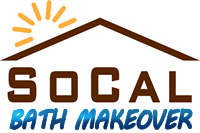Save money and the environment with an energy efficient home!
Easy as 1 – 2 – 3
1. Assess Your Home Energy Needs
 The energy assessment is your first step toward a more energy-efficient home it helps you understand how your whole house works as a system and pinpoints where your energy use can be improved and your comfort enhanced. Without a “whole-house” assessment, any approach to improving your energy efficiency could be piecemeal and fail to get the results you expect. Following standards set by the Building Performance Institute and California Energy Commission, your energy assessment will be done using strict diagnostic testing requirements—there’s no guessing.
The energy assessment is your first step toward a more energy-efficient home it helps you understand how your whole house works as a system and pinpoints where your energy use can be improved and your comfort enhanced. Without a “whole-house” assessment, any approach to improving your energy efficiency could be piecemeal and fail to get the results you expect. Following standards set by the Building Performance Institute and California Energy Commission, your energy assessment will be done using strict diagnostic testing requirements—there’s no guessing.
The testing takes about three to four hours, using specialized diagnostic tools and computer modeling.
The diagnostic testing includes:
- Blower Door Test
- Thermal Imaging Camera Test
- Duct Blaster Test
- Computer Modeling
2. Choose Energy Upgrade Options
Upon completion of your assessment, we’ll work with you to determine the best upgrades for your home and your budget. The testing takes about three to four hours, using specialized diagnostic tools and computer modeling.
Choose from these Energy Upgrade Options:
- Duct Sealing
- Attic Insulation
- CO Detector
- Air Sealing
- High-Efficiency
- Furnace
- Wall Insulation
- Cool Roof
- Hot Water and Pipe Insulation
- Combustion Safety Testing
- Thermostatic Shower Control
- Energy-Efficient Cooling
- Energy-Efficient Water
- Backyard Makeover
- Energy-Efficient Windows
- Coolwall Exterior Coating
3. Enjoy Savings and Rebates
The typical homeowner has saved about 30% energy after completing upgrades, and there are substantial rebates (upto $6,500) and financing to make your improvements very affordable. The size of the rebates depends on the percentage of the increase in your home’s efficiency, not the cost of what you do.


